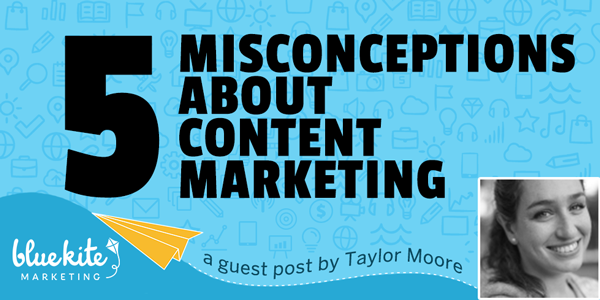Although most companies understand the value and importance of content marketing, there is still a lot of confusion about what it is and how to implement it. As a result, companies may shy away from implementing a content marketing solution because they misunderstand what it entails or how it can benefit their business.
Rather than give up on the idea content marketing, companies should take some time to learn more about it
so they can use it to their advantage. Here we clear up some of the most common misconceptions of content marketing so your business can successfully implement this powerful marketing approach.
Content Marketing Misconceptions
1. Content Creation Equals Content Marketing
Producing content alone does not constitute content marketing. Yes, you need to create high-quality content that meets the needs of visitors to your website, but content marketing goes beyond that.
You must first define your audience and then plan an engagement strategy that will include methods of distribution, communication, and interaction. When you have a plan in place for reaching and converting your audience, you can create an editorial calendar to schedule your content creation. Next, you should develop a plan for measuring your results.
Producing content in an organized, methodical way should soon get you the attention of your audience. As you receive feedback from your content, you can refine your message to make it more useful.
2. Content Alone Will Get the Job Done
Content alone does not attract visitors and inspire action. You also need to promote your content, so people interested in your message can get engaged. Social media, newsletters, mailing lists, and direct outreach can work well together as parts of a comprehensive promotional strategy.
What I’m about to say now might be a bit difficult to understand, but it is the cornerstone to a proper understanding of how content marketing works. After promoting your message and attracting prospects, you will not instantly convert them into customers. Visits to your website usually turn into sales only after a number of positive encounters with your brand and brand message. For this reason, you need to make sure your marketing plan allows enough time to plan and execute a thorough campaign that includes multiple touchpoints and the opportunity to further nurture the relationship with your audience.
3. Content Quickly Dies
Quality content has a long, useful life. Long after you have promoted your content and your marketing plan has run its course, your content still has power, so don’t discard it.
Instead, get creative and repurpose your content
for use on social media, blogs, infographics, white papers, and e-books. As time passes, the depth of your content will empower your long-term success.
4. You Should Design Content for Google
Your audience consists of people, not Google. When you provide valuable content that meets the needs of your visitors, Google will take note. If you consistently add value to the Web, your website will naturally rank higher in search results. When your visitors share your content with friends and coworkers, your material will gain traction through backlinks and social media attention.
Of course, you should always take care to use natural keywords and other strategies to maximize search engine performance. For example, meta titles, descriptions, and headers remain a fundamental staple of SEO and can create synergy with your content marketing efforts.
5. You can’t track the ROI of Content Marketing
Some people say it’s impossible to calculate the
return on investment for content marketing. To the contrary, you can measure ROI, but not through a single metric.
Depending on the means of distribution and the channels used, understanding your ROI might take some time. Google Analytics remains one of the best ways to measure and analyze how your content performs.
Adapt Your Strategy
These five misconceptions are just some of the misleading ideas that prevent people from recognizing the full potential of content marketing. Now that you have a better idea of the truth, you can adapt your approach and start delivering quality results.



